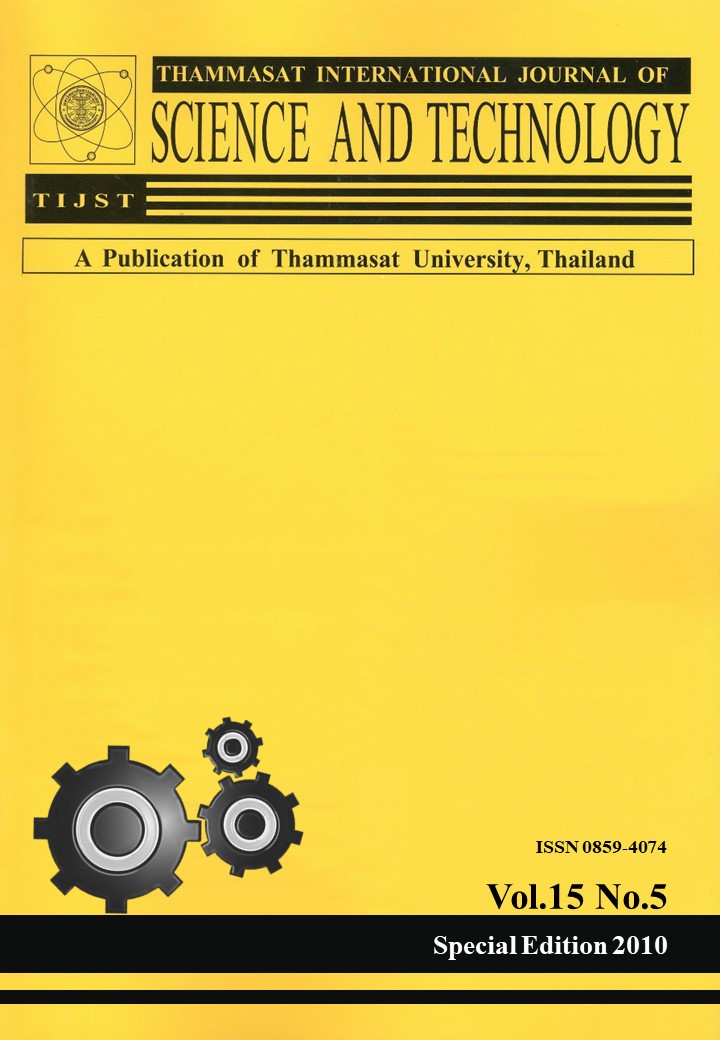Hydrodeoxygenation of Linoleic Acid on Ni-Mo Catalyst
Main Article Content
Abstract
Bio-fuels have become an important alternative energy for many aspects due to increasing petroleum based fuel prices. One of the bio-fuels arises from the production of diesel-like-hydrocarbons from vegetable oils. In this contribution, the deoxygenation of linoleic acid was investigated in a continuous packed-bed reactor over a NiMo/Al2O3 catalyst under a high pressure of 3.5 MPa and a temperature range of 573-673 K. This study aimed to produce hydrocarbons in the diesel range from unsaturated fatty acid called linoleic acid as well as to elucidate the effects of temperature and hydrogen partial pressure on the product distributions. Products were mainly normal-alkanes, n-octadecane (C18) and n-heptadecane
(C17). The distribution of desired-products (>C13 hydrocarbons) strongly depended on both the reaction temperature and the partial pressure of hydrogen. Under the studied reaction conditions, the ratio of C18 to C17 hydrocarbon was always greater than one. Surprisingly, as the partial pressure of hydrogen decreases, the C18/C17 ratio decreases to less than one. From this result, it was concluded that the oxygen atoms were mainly removed from fatty acid by hydrogenation reaction. Furthermore, at a high reaction temperature the yield of desired products decreased while the yield of cracking products increased.
Keywords: deoxygenation, hydrogenation, linoleic acid, NiMo catalyst


